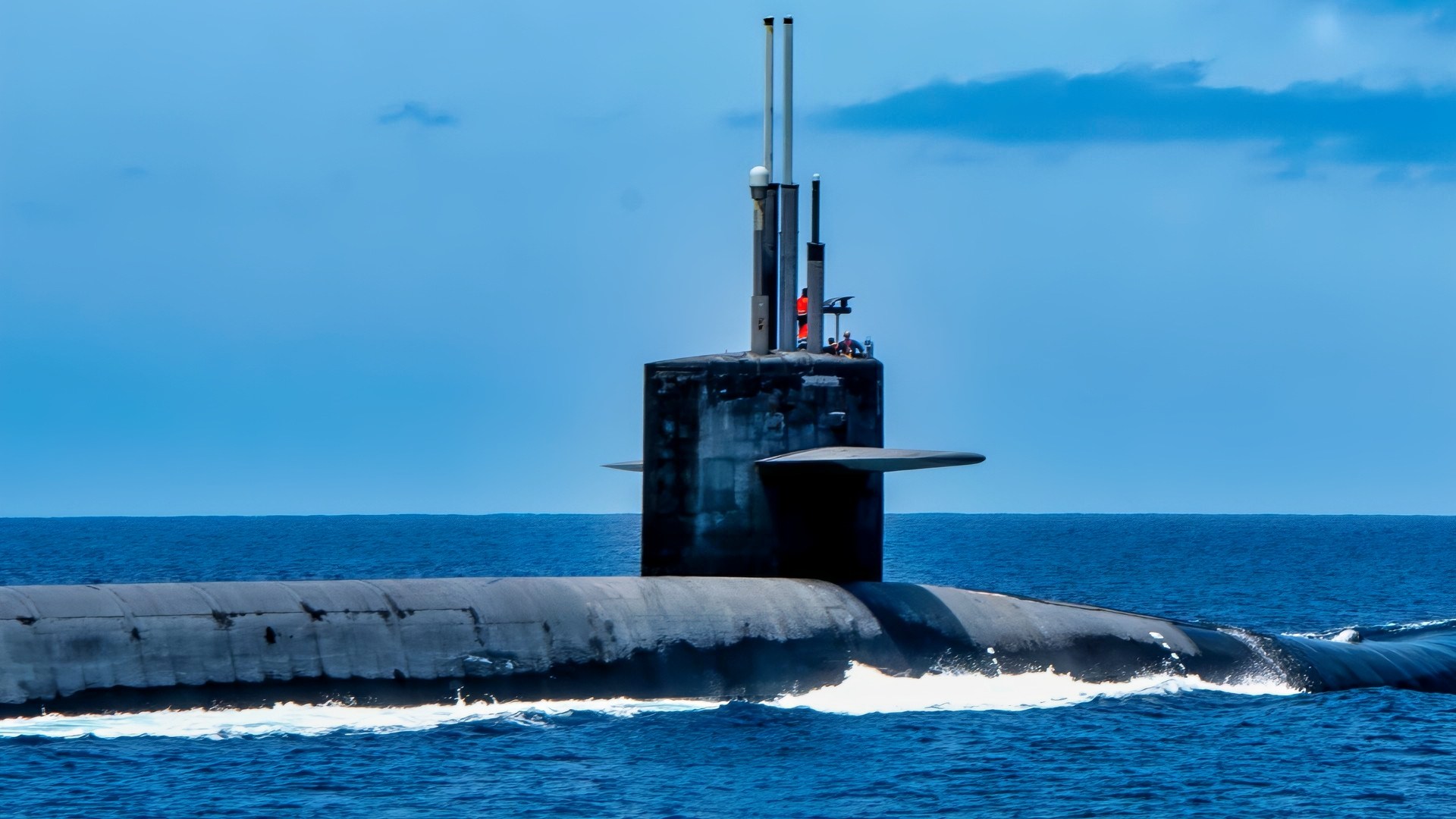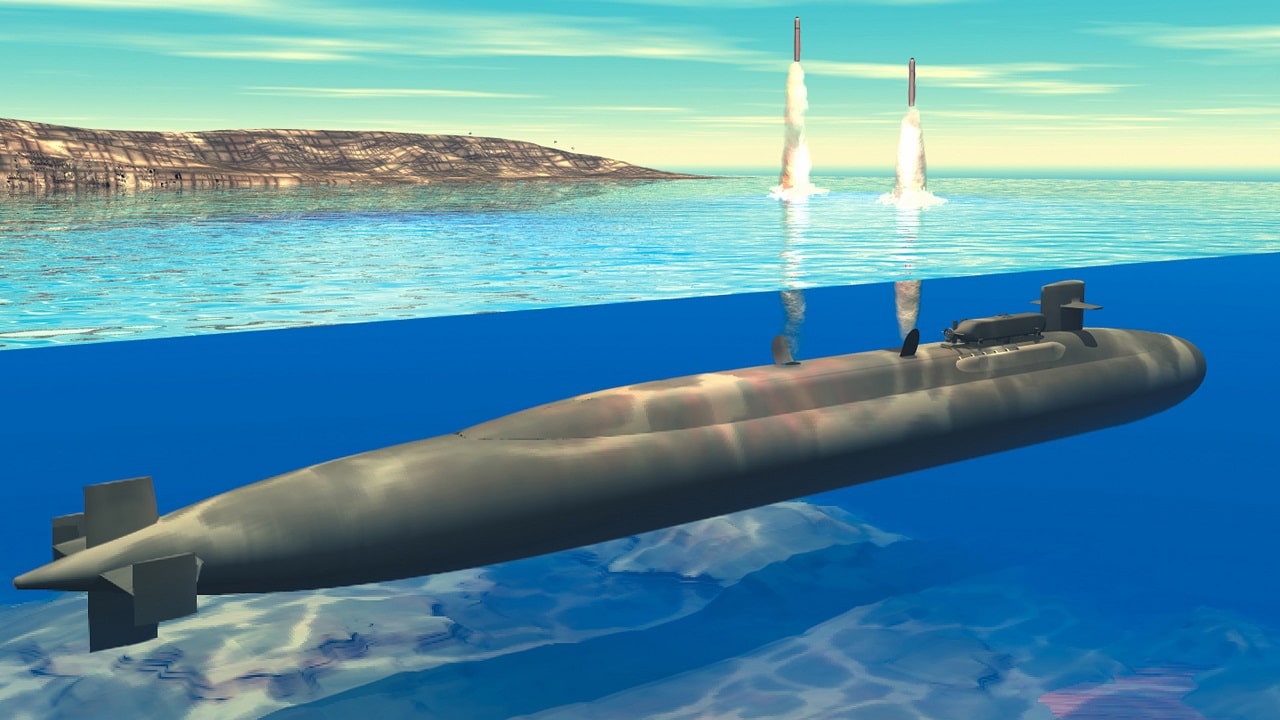Key Points and Summary – The U.S. Navy faces a massive loss of undersea firepower as its four Ohio-class guided-missile submarines (SSGNs) are set to retire by 2028.
-Each SSGN carries up to 154 Tomahawk cruise missiles, and their departure will create a significant capability gap. To fill this void, the Navy is scrambling to accelerate production of the new Block V Virginia-class submarines.

(July 29, 2025) – A U.S. Air Force A-10C Thunderbolt II flies over the Ohio-class ballistic missile submarine USS Kentucky (SSBN 737) in the Pacific Ocean, July 29, 2025. The armed airborne escort exercise is designed to increase and demonstrate the Joint Force’s capability to protect strategic assets like Kentucky. Submarine Group (SUBGRU) 9, exercises administrative and operational control authority for assigned submarine commands and units in the Pacific Northwest providing oversight for shipboard training, personnel, supply and material readiness of submarines and their crews. SUBGRU-9 is also responsible for nuclear submarines undergoing conversion or overhaul at Puget Sound Naval Shipyard in Bremerton, Washington. (U.S. Navy Photo by Lt. Zachary Anderson)
-These boats feature an added “Virginia Payload Module” that increases their Tomahawk capacity to 40 missiles each.
-It is now a race against time for the industrial base to deliver these new subs quickly.
The Ohio-Class Submarine Faces a Crisis in One Word: Retirement
A U.S. Navy guided missile submarine (SSGN) is a massive, lethal war machine that stretches the length of nearly two football fields and carries as many as 154 Tomahawk missiles.
This kind of firepower arms all four of the service’s SSGNs.
These undersea war platforms are armed with such massive firepower to ensure land-attack support is available for any military campaign that calls for it.

Ohio-class SSGN. Image Credit: Creative Commons.

SOUDA BAY, Greece (Sept. 7, 2019) The Ohio-class cruise missile submarine USS Florida (SSGN 728) arrives in Souda Bay, Greece, for a scheduled port visit, Sept. 7, 2019. NSA Souda Bay is an operational ashore base that enables U.S., allied, and partner nation forces to be where they are needed and when they are needed to ensure security and stability in Europe, Africa, and Southwest Asia. (Photo by Joel Diller/Released)
A Significant Retirement
However, the Navy’s Ohio-class SSGNs, and the unmatched firepower they bring, will be retiring in the coming years, a fact that has pushed the Navy to aggressively scramble to find replacement undersea striking capacity.
That replacement comes in the form of the Block V Virginia-class submarines. The Block V Virginias are built with an extra 80-foot section to carry 28 additional Tomahawks per boat, which brings the total firepower of each vessel to 40 Tomahawks.
The Navy is moving fast to accelerate production and delivery of these boats, but the service will need to produce them quickly to ensure there is no interruption to the firepower advantages offered by the SSGNs.
The USS Ohio (SSGN-726), Georgia (SSGN-729), Michigan (SSGN-727), and Florida (SSGN-728) are all slated to retire from 2026–28.
These heavily armed boats have already operated years beyond their intended service lives, but there is concern at the fact that the anticipated retirement of four large submarines, capable of carrying 154 Tomahawks each, withdraws a massive amount of collective firepower.
Tomahawk Advantage in Oscar-Class SSGNs
SSGNs have proven extremely valuable in key military campaigns, such as the Gulf War, and the attack on Libya in 2011.
Their ability to unleash mass precision fires at the beginning of a military campaign has proven decisive and impactful over the years, as Tomahawk weapons are often among the first to strike in a military operation.
The Tomahawks can destroy fixed infrastructure, command and control areas, bunkers, leadership locations, and force concentrations—all without putting attackers at risk.
Tomahawks can travel as far as 900 miles at speeds greater than 550 miles per hour.
Block IV Tomahawks have a loitering Intelligence, Surveillance, and Reconnaissance function and a two-way datalink enabling them to receive new information in flight and adjust to changing target information.
While capable of precision strikes, the submarines are also critical in any effort to mass firepower, given the sheer volume of munitions they can unleash.
This is important, because while there have been tremendous breakthroughs in the realm of range, data networking, and precision targeting—specifically involving Tomahawks—there will still likely be a need for mass firepower in the event of great power conflict.
Perhaps enemy air defenses could be targeted from the ocean, or battlefield surveillance identifies weapons storage facilities and force concentration targets that can best be attacked by Tomahawks.
Dwell Time for Ohio-Class
Mission longevity has also been a key factor for SSGNs, as they are capable of remaining at sea continuously for nearly two years if the mission calls for it. The USS Florida, for example, once traveled nearly 70,000 miles over the course of 700 days.

Ohio-Class Submarine U.S. Navy.
This capability for extended dwell time is quite significant from a tactical point of view, as a submarine able to sustain undersea operations for this length of time increases survivability and improves mission prospects.
The ability to sustain operations and project power is of particular relevance in areas such as the Pacific theater, where a vast maritime geographical expanse might require extended deployments and a need for large-scale firepower in the event of a conflict.
For instance, a boat that has not needed to return to port can remain underwater in strategically vital locations and be in a position to support clandestine underwater surveillance and attack.
More specifically, large SSGNs are able to carry and deploy groups of Special Operations Forces seeking to conduct reconnaissance operations, or covert missions that begin with a stealthy surprise undersea attack.
About the Author: Kris Osborn
Kris Osborn is the President of Warrior Maven – Center for Military Modernization. Osborn previously served at the Pentagon as a highly qualified expert in the Office of the Assistant Secretary of the Army—Acquisition, Logistics & Technology. Osborn has also worked as an anchor and on-air military specialist at national TV networks. He has appeared as a guest military expert on Fox News, MSNBC, The Military Channel, and The History Channel. He also has a Masters Degree in Comparative Literature from Columbia University.
More Military
‘Captain, We Have Been Hit’: A Tiny Nuclear Submarine ‘Sank’ $4.5 Billion Navy Aircraft Carrier
America’s F-35 Stealth Fighter Simply Summed Up In Just 1 Word
China’s New J-35 Stealth Fighter Simply Summed Up In Just 1 Word
The U.S. Navy Is Now ‘Cannibalizing’ Its Own Fighter Jets and Submarines
Operation Black Buck: How Avro Vulcan Bombers Broke Range Records in the Falklands War










